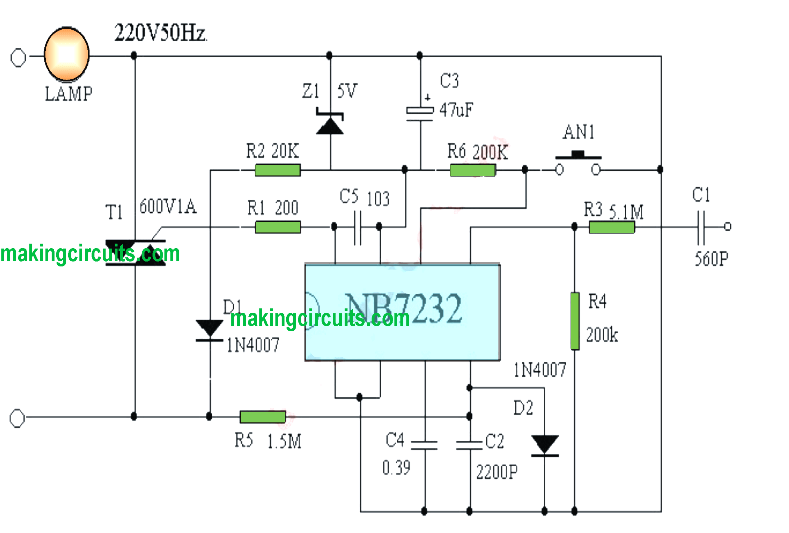The following circuit can be effortlessly used for dimming a 220V or 120V mains operated lamp or fan using a single push button operation.

Referring to the given figure, the IC NB7332 is an advanced frequency generator which changes its high frequency pulse range to alter the triac's switching pattern such that for lower power pulses with wider switching periods is employed, while for higher power the gaps between the frequency pulses are reduced proportionately.
The push button can be used for setting up the illumination level on the connected lamp or may be a ceiling fan.
Each press of the button causes a step wise power increase on the load and finally when the full power is reached the subsequent press on the button reverts the load intensity to zero, and the process initiates from there in the ascending order.
The IC NB7232 also enables an external triggered operation for the intended light dimmer operation from a remote source in order to achieve a remote controlled fan or light dimming operations. This trigger can e implemented across the end of the C1 capacitor.
If you have any doubts regarding this design make sure to ask them through your commentrs
Leave a Reply